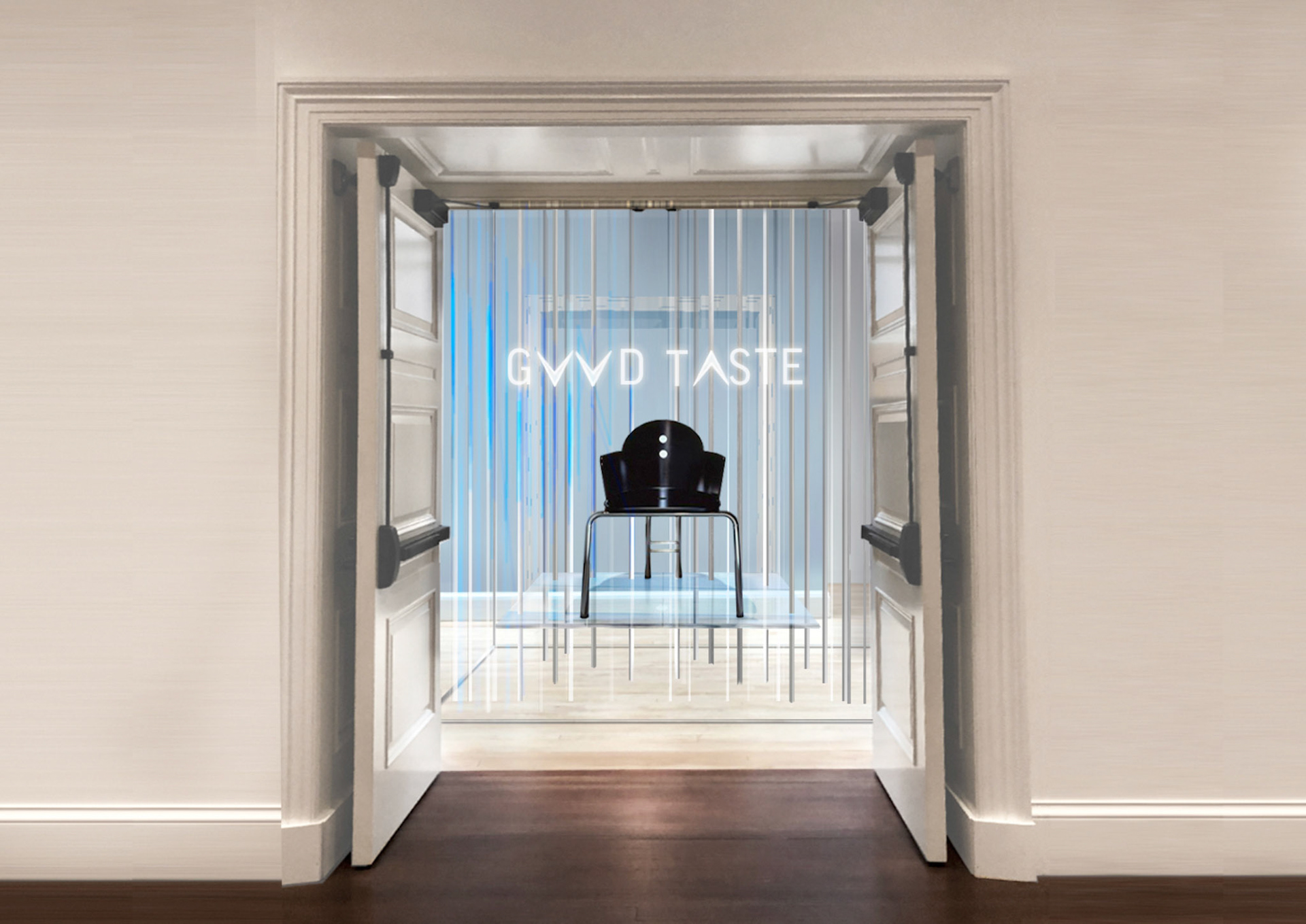Project Brief: 'Making the Unknown Known' is a conceptual exhibition held in the RISD Museum dedicated to the identification and of unknown, little-known or mis-represented women designers whose contributions have been overshadowed by their male counterparts throughout history. Each gallery within the RISD Museum holds a different curated immersive experience to reassess the work and contextual understanding of women in design. 'Good Taste', an exhibition of Memphis design, presents a proposal for one of these exhibitions.








Final Renderings [Left to Right]: View of North Main St. Facade (Day), View of North Main St. Facade (Night), View of Benefit St. Facade, View of Entrance, View of Interior 1, View of Interior 2, View from Stairwell, View from Balcony
PROJECT SUMMARY
The Memphis Group in the 1980s aimed to break expectations of 'good taste' as standardized by Modernist architecture. It combatted the clean white formalist and rationalist design embodied by architects such as Le Corbusier with the exploration of bold colors, experimental graphics and absurdist compositions. The Italian architect and designer Ettore Sottsass is credited as the movement's founder and predominant designer. Although overshadowed by her male counterpart, Nathalie du Pasquier's iconic prints and innovative use of color launched the Memphis aesthetic.
Recently, contemporary artists and designers have revived the forgotten Memphis style canned as the '80s aesthetic' in order to spark new discussions. Memphis in the 1980s was predominately categorized by two-dimensional prints, objects and furniture. Today, artists such as Camille Walala, Kelly Behun and Faye Toogood are bringing the Memphis language into the urban fabric to create experiential, environmental and interactive based works.
"With so much uncertainty surrounding the political landscape and the world in general, it's nice to feel there's one environment you actually can control; your own little fiefdom where you can fashion the world as you want it, at least aesthetically" -Kelly Behun
The installative exhibition "Good Taste" is a physical expression of the Memphis narrative as it evolved from the 1980s to today. The gallery's impressive double-height and dominant staircase provide the opportunity to present an exhibition on a vertical axis. Constructed within a thin steel frame, the exhibition consists of hundreds of one-inch hanging aluminum extrusions symbolically derived from triangular Memphis typography. Upon entry, the visitor moves throughout the forest-like extrusions to discover curated 'stuff'. Nathalie du Pasquier furniture, prints and objects are suspended on acrylic platforms held by the aluminum extrusions. As the visitor moves up the staircase, a painted image slowly emerges. Each angle of the triangular extrusions reveals a one-inch, twenty-foot tall slither of an image that is undetectable when standing from below. The once seemingly randomized design is now driven with extreme precision. Only when the viewer reaches the top of the staircase can the portrait of Nathalie du Pasquier be deciphered. What once held the exhibition at the bottom, becomes the exhibition at the top. The exhibition-turned-installation is a physical manifestation of the evolution of Memphis and its transition from object to experience.
PROCESS IMAGERY & NARRATIVE JOURNEY
'Good Taste' Title Slide
'Good Taste' featuring artists: Nathalie du Pasquier and Three Memphis Contemporaries: Kelly Behun, Faye Toogood and Camille Walala
Two Images Prompting Discussion About History of Memphis Origins as a Reaction and Direct Contrast to Modernist Architecture
Digram Prompting Discussion of Memphis in 1980s and the Evolution of its Form from 'Print' to 'Object' to 'Idea' Based Work
Diagram Prompting Discussion of Contemporary Memphis and the Evolution of it Form to Experiential, Environmental and Interactive Based Work
Conceptual Diagram Moving Upwards from Memphis 'Then' to Memphis 'Now'
Existing Conditions & Sequence
Conceptual Diagram of Exhibition Content Moving Upwards from 'Object' to Intangible 'Experience'
Conceptual Diagram of Exhibition on a Vertical Axis
Diagram of Steel Framing Device
Diagram of Exhibition Elements: Painted Aluminum Extrusions, Framing Device and Floating Platforms
Section and Cross-Section of Frame and Hanging Extrusions
Floor Plan and Reflected Ceiling Plan of Exhibition Footprint and Spatial Layout
Existing Condition of RISD Museum as Originally Designed by Jose Rafael Moneo
Final Rendering of Exterior Intervention: View of North Main St. Facade (Day)
Final Rendering of Exterior Intervention: View of North Main St. Facade (Night)
Final Rendering: View of Benefit St. Facade
Final Rendering: View of Entrance
Final Rendering: View of Interior
Final Rendering: View of Interior
Final Rendering: View from Staircase
Final Rendering: View from Balcony